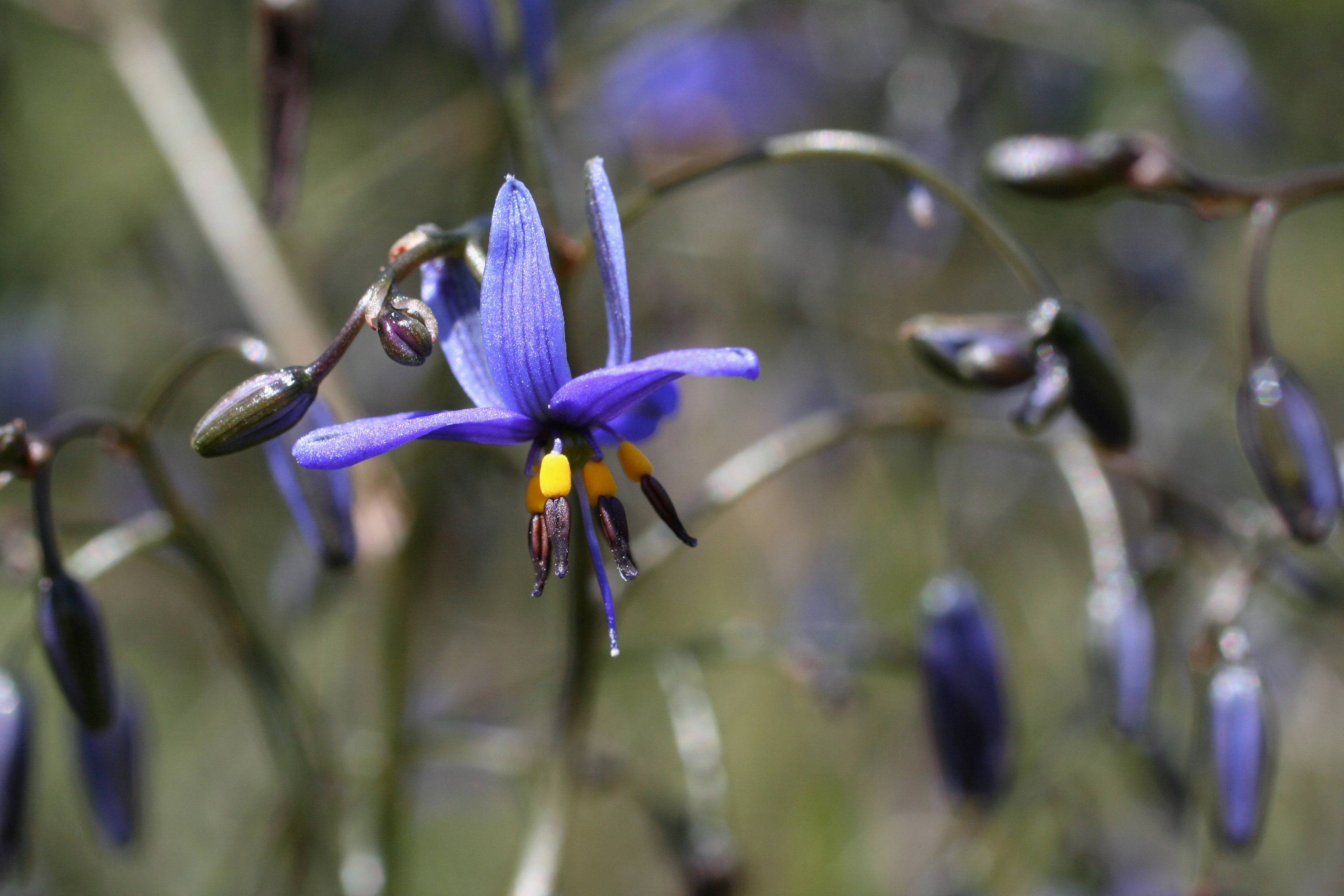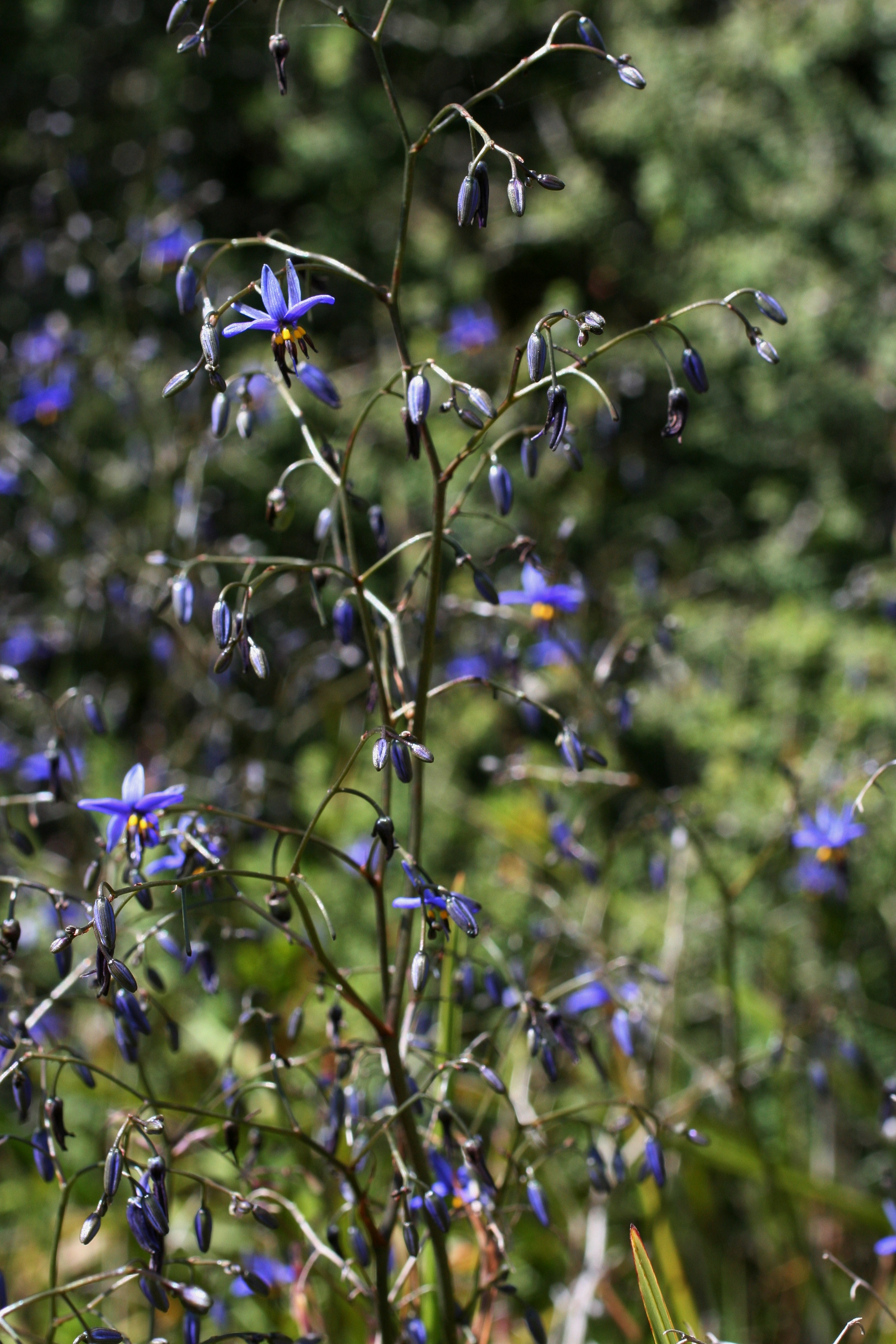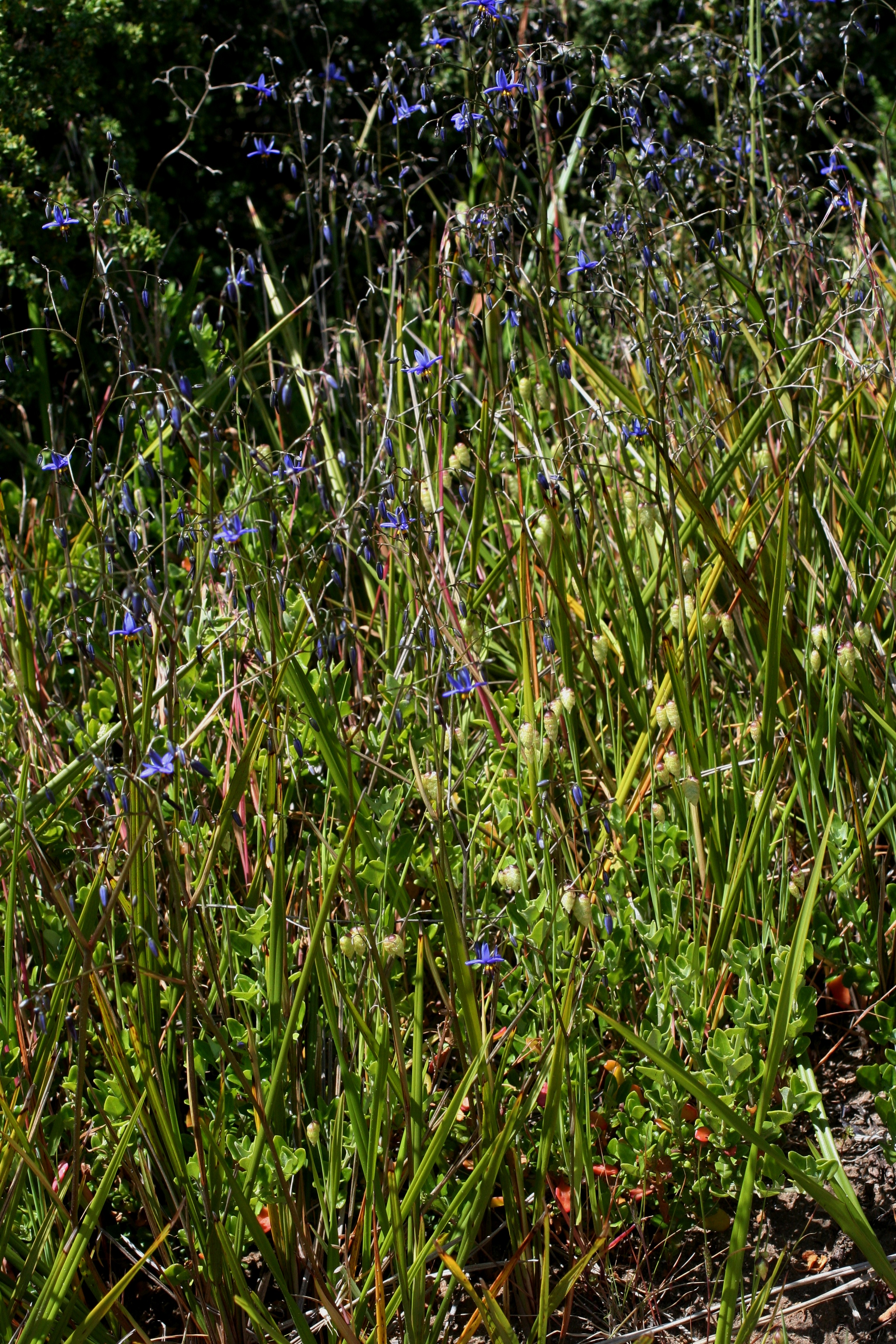



This lily is uncommon along the Jan Juc cliff tops but a few small dense colonies persist in sites close to the walking track. To date it has not been fully described (hence the abbreviated species in the name- shown as sp.).
Coastal Flax-lily is a perennial characterised by rhizomes that have shortened inter-nodes that spread out creating a dense, leafy affect. The leaves are generally softly arching with the upper side a darker green in colour.
Long flower stems grow above the foliage in spring producing striking blue flowers with bright yellow male filaments. Following flower pollination, many showy, bright violet/purple berries upto 13mm in length remain on the plant for some time.
This species is similar to Dianella admixta (Black-anther Flax-lily). It differs by growing taller and by having larger flowers and fruit. The leaves also tend to be greener than D. admixta (which typically have a bluish tinge). Finally, D.sp.aff. revoluta (Coastal) is confined to the coast on well-drained soil whereas D. admixta is also found inland.
Indigenous uses as provided by the Wathaurung Aboriginal Corporation: Dianella leaves are used for making string and baskets. The fruits and pith at the base of the leaves of D. revoluta are edible.
The two sides of the leaf are different colours